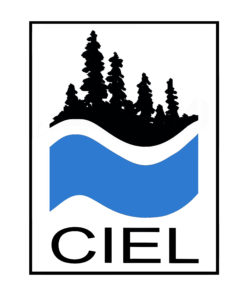Shore
Our Shore Defined:
The shore is the land that surrounds aquatic environments which usually extends inland from the high-water mark. It begins where the littoral zone ends, and in its natural state, it forms a diversified, rich terrestrial environment.
Natural shores consisting of trees, shrubs and grasses generally play several important ecological roles in aquatic ecosystems:
- They provide a habitat for wildlife and plants, and acts as a barricade against erosion;
- They filter the excess influx of sediments, nutrients and chemical contaminants carried by runoff;
- They protect against excessive warming of the water;
- They regulate the natural cycle of water.
Over time, a balance is created between the different components of the natural shore (plants, rocks, slopes, drainage for runoff, etc.). These components constantly evolve and adapt to existing conditions in the environment.
Over thousands of years, natural shores have evolved to provide one of the most effective, least expensive erosion controls. The diverse plants that colonize them form a complex web of roots and foliage that stabilizes the banks and enables them to withstand the impact of wind, rain and waves.
The shore of a lake or a river often becomes less stable when a large portion of its vegetation is chopped down. The roots that held back the components of the soil (earth, rocks, humus, nutrients, etc.) perish and can no longer play this important role. Particles of soil from the shores can then be released into streams, be transported in the water over long distances and wind up settling on the bed of slow flowing aquatic environments such as lakes. The settling of sediments may well cause the quality of certain zones that fish use for feeding or spawning to deteriorate. Take lake trout for example: it lays its eggs on rocky or pebbly bottoms so that the water can circulate between the eggs and properly oxygenate the embryos. If the eggs are covered in sediment, the embryos will be deprived of oxygen and suffocate to death.
The trees, shrubs and grasses that grow naturally along the bank of a creek or the shore of a lake play a crucial role in the conservation of fish habitat. They act as a filter between the soil and the water. The network of roots serves just as much to filter runoff as it does to stabilize the shore. As a filter, it traps contaminants before they reach the water body, in particular, phosphorus, a naturally occurring nutrient, but which is also found in various products such as detergents and fertilizers. In excessive quantities, phosphorus may disrupt the balance in a body of water and cause the pervasive growth of algae and aquatic plants. One example is blue-green algal, or cyanobacterial blooms, which can pose health risks for swimmers and other users of an aquatic environment.
What’s more, thanks to leaves and branches, which lessen the impact of heavy rains, and dead leaves, pine needles and broken twigs, which slow the flow of runoff, the soil can more easily absorb rainwater, and thus limit flooding and shore erosion. Without this natural line of defense, nearby banks and aquatic habitats are unprotected and become very vulnerable to natural forces.


 Français
Français